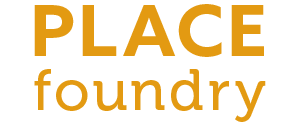Building our way forward
What we build and how we make it matters to developing places where everyone can thrive together. We urgently need new ways to our strategies and tactical plans to renew cities, towns, and villages throughout the United States.
In 2020, Andreessen Horowitz wrote on the lack of effort to imagine, invent, and build, in his article "It's Time to Build." From transportation and manufacturing to housing and education, Horowitz argues that our complacency (lack of desire) keeps us stuck.
"We need to want things more than we want to prevent these things," and "we need companies to build these things, even if incumbents don't like it, even if only to force incumbents to build these things."
Before the coronavirus, many cities and regions throughout the midwest faced stagnation and decline in population, business startups, and fiscal solvency. After reading Horowitz, it made me think about the urgent need to find common ground and build platforms to:
create physical places that advance community health, wellness and is adaptable to change;
nurture our hidden economic and industry clusters within our marketplace ecosystems
Cultivate housing and neighborhoods that allow for diversity in design, product, and affordability, no matter your income, are hard to come by.
Reset the regulatory process and advance transformative place development policies that enable connected, vibrant, and inclusive places.
I went back to my notebook from last year to see my thoughts then, how Horwitz’ piece still challenges me today. Last year, I decided to lean into four (4) key areas to build up: agribusiness and food systems; housing; transportation, design. Below is what I thought then and actively working on today:
Food is essential for all. So let's build a food ecosystem that integrates local farming, the latest agriculture technology, commercial kitchens, and the table where we eat our meals.
Eliminating the housing crisis is a non-negotiable for me. So let's solve the affordable housing crisis that grips this nation and keeps people trapped in homelessness. Reexamining our land use and building regulations that manage our communities is an excellent step to take.
Mobility and affordability are essential for growing a diverse, equitable, and sustainable labor market. So let's design the components, build, and export the finished product for the next generation of air, rail, and road transportation by leveraging our strengths in electrical systems design and distribution.
Design is a powerful influencer. So let's co-create with your engineers, architects, urban designers, and others to solve the physiological and safety needs that keep places livable, vibrant, inclusive, and sustainable.
